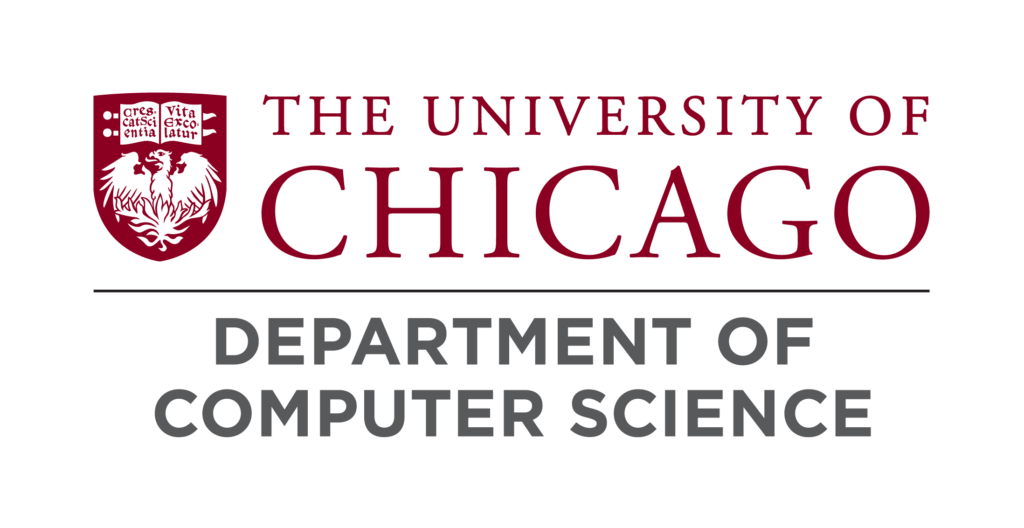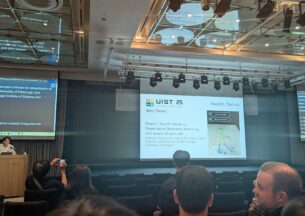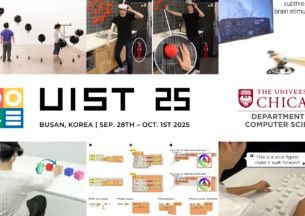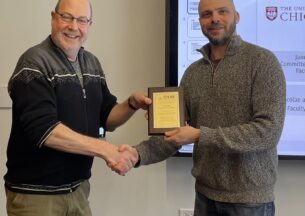AI-Powered Network Management: GATEAU Project Advances Synthetic Traffic Generation
Modern networks depend increasingly on machine learning for security, performance optimization, and traffic management. But a critical bottleneck has emerged: the scarcity of high-quality, labeled network datasets needed to train robust AI models. Privacy concerns, high collection costs, and the rapid evolution of network behaviors make real-world data difficult to obtain and share.
Nick Feamster, Neubauer Professor in the University of Chicago’s Department of Computer Science, and Francesco Bronzino, Associate Professor at ENS Lyon, are leading GATEAU—Generative AI Techniques for Network Management—to solve this fundamental challenge. Nick Feamster, Neubauer Professor in the University of Chicago’s Department of Computer Science, and Francesco Bronzino, Associate Professor at ENS Lyon, are leading GATEAU—Generative AI Techniques for Network Management—to solve this fundamental challenge.
Supported by the University of Chicago’s International Institute of Research in Paris (IIRP) Faculty Grant program, their project leverages cutting-edge diffusion models, similar to those used in advanced image generation, to create synthetic network traffic that is nearly indistinguishable from real data.
“The limitation isn’t just about having enough data—it’s about having the right kind of data,” says Feamster. “Current synthetic approaches focus on basic flow statistics, but modern machine learning models need full packet-level details to achieve the accuracy required for production deployment. GATEAU addresses this by generating high-resolution synthetic traces that preserve the intricate patterns and protocol behaviors of real network traffic.” 
The technical innovation centers on adapting text-to-image diffusion models to generate complete packet traces rather than simplified statistics. This approach, embodied in their NetDiffusion framework, produces synthetic data that not only exhibits high statistical similarity to real traffic but also improves machine learning model performance when used for data augmentation. Unlike previous GAN-based methods, diffusion models can capture both broad patterns and fine-grained dependencies while maintaining training stability.
Collaborating with Feamster and Bronzino are Junchen Jiang and Sanjay Krishnan from the University of Chicago, along with Laurent Vanbever from ETH Zurich and Kevin Vermeulen from CNRS, bringing complementary expertise in networking, AI, and systems research.
Beyond Traffic Generation: Practical Applications
The implications extend far beyond academic research. Feamster and Bronzino have already commercialized related work through NetMicroscope, their startup that provides AI-powered network performance analytics to service providers and enterprises. NetMicroscope’s technologies—including the patent-pending NetDiffusion and NetSSM models—enable natural language-driven traffic scenario generation, “what-if” analysis for network optimization, and causal inference for identifying performance bottlenecks.
“What excites me most is how synthetic traffic generation transforms the economics of network security and optimization,” says Bronzino. “Organizations can now train and deploy AI models without ever exposing sensitive production data. A hospital or financial institution can improve network security using synthetic data that preserves the statistical properties of their real traffic while protecting patient or customer privacy. This opens entirely new possibilities for Machine Learning as a Service in regulated industries.”
GATEAU’s research agenda addresses several technical frontiers. The team is exploring transformer-based architectures for sequential traffic generation, developing methods to transfer models across different network contexts (broadband versus cellular networks, for example), and tackling the challenging problem of generating semantically meaningful packet payloads. They’re also building network-specific foundation models that could further improve generation accuracy while reducing the “closed world” problem that plagues lab-generated traffic.
International Collaboration and Knowledge Transfer
The collaboration between Feamster and Bronzino, formalized through previous FACCTS funding, has already produced significant results: six top-tier conference publications in the past two years, a fully funded NSF-ANR joint project on “Modeling Modern Network Traffic,” and NetMicroscope’s award from the University of Chicago’s George Shultz Innovation Fund competition in January 2024.

GATEAU leverages the University of Chicago’s Boyer Center in Paris as a hub for biannual workshops that bring together researchers, students, and industry partners from both sides of the Atlantic. These workshops facilitate not only academic exchange but also connections with Europe’s startup ecosystem through Station F, the continent’s largest incubator. The project also supports jointly taught courses between the University of Chicago and ENS Lyon, allowing students to engage directly with cutting-edge research while developing international perspectives.
“What makes this collaboration powerful is how it bridges multiple worlds,” notes Bronzino. “We’re not just connecting universities across continents—we’re connecting academia with industry through companies like NetMicroscope and NetFabric, connecting research with entrepreneurship through Station F, and connecting technical work with policy through our public-facing activities. This interdisciplinary approach, blending computer science, business development, and policy engagement, creates opportunities that simply wouldn’t exist if we stayed in our separate silos.”
The team’s jointly taught courses between the University of Chicago and ENS Lyon exemplify this philosophy, giving students direct exposure to how research translates into commercial products and policy frameworks. “International collaboration accelerates both research and real-world deployment,” adds Feamster. “By working across institutions and regulatory contexts, we’re developing solutions that can adapt to different network environments and privacy frameworks—from GDPR compliance in Europe to sector-specific regulations in the US.”
Technology Transfer and Industry Impact
The project sits at the intersection of academic research and commercial application. NetMicroscope already maintains large contracts with major service providers including Comcast for nationwide deployment of network measurement technologies. Previous collaborations on ML-driven network management with Verizon, Google, and AT&T have resulted in patents and production deployments.
GATEAU’s synthetic traffic generation capabilities address real industry pain points: enabling large-scale network testing without requiring production traffic, training security models to detect novel attack patterns, and performing counterfactual “what-if” analysis to predict the impact of network configuration changes. These capabilities integrate with existing monitoring platforms like Catchpoint and ThousandEyes, positioning NetMicroscope as an intelligent analytics layer that enhances rather than replaces existing infrastructure investments.
Looking Ahead
The research challenges remain substantial. Current generation capabilities are limited to 1,024 packets per flow, and generating semantically meaningful packet payloads requires further innovation. The team is exploring whether transformers can maintain long contexts for generating meaningful flows, investigating whether to build network-specific foundation models, and developing methods to integrate protocol compliance directly into the generative process rather than applying it post-generation.
“The vision extends beyond just generating realistic traffic,” says Bronzino. “We’re building the foundation for a new paradigm in network management where AI models can be trained, tested, and deployed without the traditional constraints of data availability and privacy. This has implications for how we approach everything from cybersecurity to quality-of-experience optimization.”
The project also includes public-facing activities: conferences accessible to general audiences, workshops for policymakers, and demonstrations designed to demystify AI and network technology. “AI and networking technologies are increasingly shaping policy decisions about privacy, security, and infrastructure investment,” says Feamster. “But these technologies remain opaque to most policymakers and the public. Through our workshops and open events at the Boyer Center, we’re committed to making these concepts accessible—not just explaining what AI does, but helping people understand how it works and what its limitations are.”
By connecting academic research, industry deployment, and public education, GATEAU aims to ensure that advances in network AI benefit not just researchers and companies, but society more broadly.
As networks continue to evolve and machine learning becomes increasingly central to their operation, GATEAU’s work on synthetic traffic generation represents a critical enabler—making it possible to train robust, privacy-preserving AI models that can secure and optimize the digital infrastructure underlying modern life.
